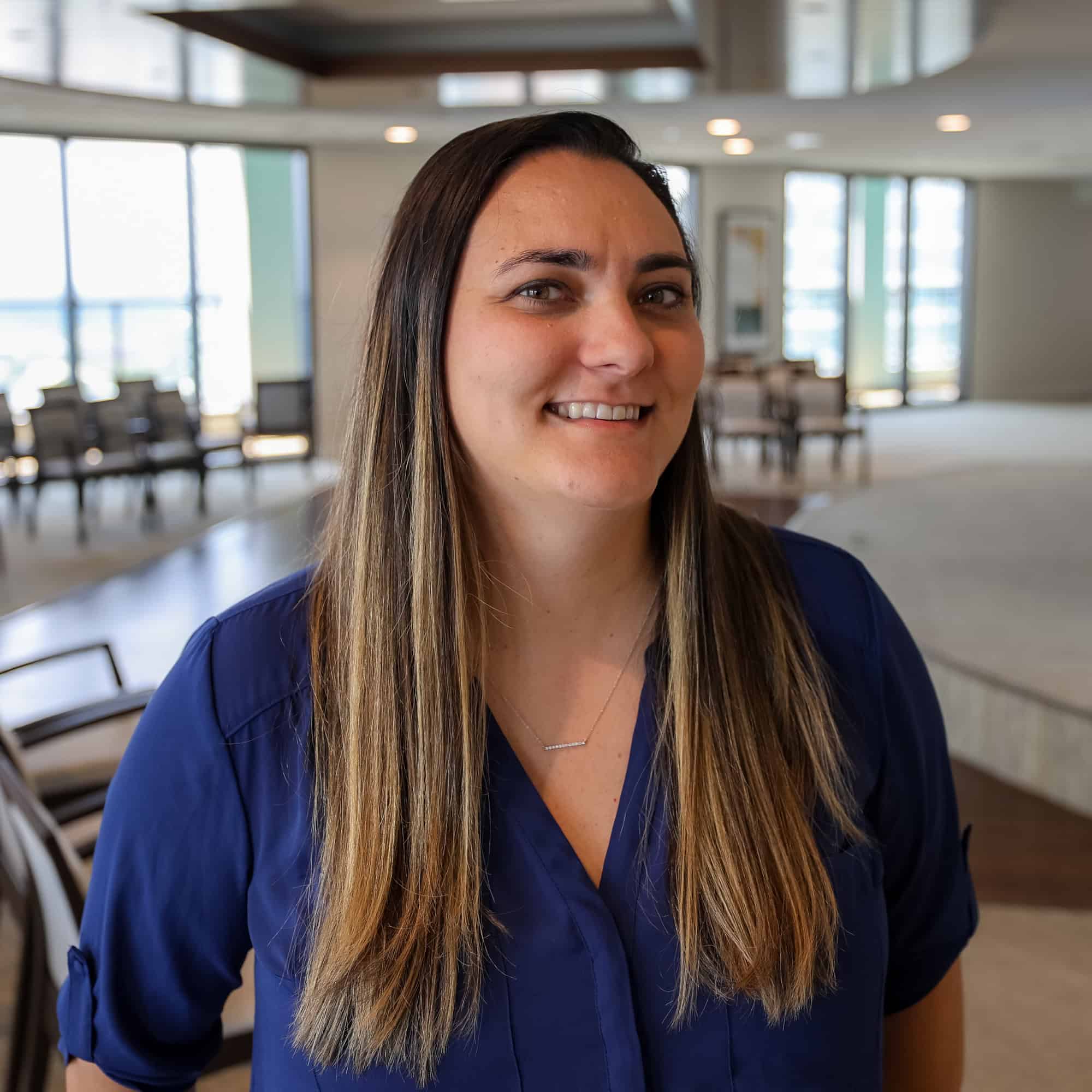THE VBP Blog
Understanding Managed Long-Term Services and Supports (MLTSS) for In-Home Care
How MLTSS Programs Help People Receive Care at Home

February 12, 2025 – For millions of Americans with long-term care needs, staying at home is the preferred option. That hasn’t always been technically or financially feasible, but Managed Long-Term Services and Supports (MLTSS) are transforming Medicaid by allowing a shift from institutional care to home-based alternatives that allow people to receive support while remaining in familiar surroundings. These programs help older adults and individuals with disabilities access services such as personal care, home health aides, transportation, and meal support—all essential to maintaining independence and quality of life.
As states continue transitioning to managed care models, MLTSS is playing a critical role in expanding access to in-home care. In this blog, we’ll explore how MLTSS works, why states are prioritizing home-based care, and what the future holds for these programs.
A Shift Toward Home-Based Care with Managed Long Term Services and Supports
MLTSS is a Medicaid-managed care model that allows states to contract with managed care organizations (MCOs) to coordinate long-term services and supports for individuals with disabilities and older adults. Instead of relying on traditional fee-for-service Medicaid, where participants and providers navigate a complex system on their own, MLTSS streamlines care by integrating medical services, personal care, and social support into a single program.
It’s important to note that while no two Medicaid programs are the same, the basic tenets of them typically are. Some of the key differences include who is required to be part of the MLTSS programs, whether it is mandatory versus optional, and the services offered by each state. The most fundamental differences also lay in whether the MLTSS services are partially or fully integrated with behavioral and physical health services. The inclusion of physical health care usually entails a much more medicalized model of care, with greater emphasis and opportunity for managing the total cost of care. This could be at the detriment to the consumer, as it can reduce self-direction and consumer control in favor of medical professionals’ perspective on whole person care.
The program has seen a big expansion in recent years. As of December 2023, 24 states have managed long-term services and supports programs in place, up from only eight in 2004. Some of the goals that sates are looking to achieve with MLTSS are promoting care coordination, enhancing quality and beneficiary satisfaction, mitigating cost growth, and increasing access to home and community-based services.
For decades, Medicaid’s long-term care system was focused on institutional care. However, most people who require LTSS prefer to stay in their own homes, maintaining their independence and quality of life. Recognizing this need, many states have transitioned to MLTSS to offer more home-based care options. The change has been significant, as 6 million of the 8 million who use paid long-term services and supports (LTSS) delivered in home and community settings.
Under MLTSS, eligible individuals can receive a broad range of in-home supports, including:
- Personal care assistance, such as help with bathing, dressing, and grooming.
- Home health care, including skilled nursing, physical therapy, and medication management.
- Meal delivery and nutritional support.
- Care coordination, ensuring enrollees receive the right care at the right time.
- Respite care, offering temporary relief for family caregivers.
- Transportation services to help individuals get to medical appointments.
By expanding access to home-based services, MLTSS not only enhances individual autonomy but also reduces the reliance on institutional care, which is often more expensive. Research has shown that home-based care is not only preferred by patients but also leads to better health outcomes by keeping individuals in their familiar environments, reducing unnecessary hospitalizations, and preventing premature nursing home placements. As more states move toward MLTSS models, the focus on flexibility, person-centered care, and cost efficiency continues to grow.
The Role of Managed Care Organizations (MCOs) in MLTSS
Managed Care Organizations play a big role in the implementation and administration of Managed Long-Term Services and Supports programs. Under MLTSS, states contract with MCOs to oversee the delivery of LTSS. These organizations act as intermediaries, ensuring that enrollees receive the care they need from approved, high-quality providers.
MCOs are responsible for:
- Conducting comprehensive assessments to determine an individual’s needs and create a customized care plan.
- Coordinating medical, behavioral, and social services to provide holistic, wraparound support.
- Ensuring continuity of care by working with families, primary care physicians, specialists, and home care providers.
- Managing provider networks and ensuring that only qualified, credentialed professionals deliver services.
- Monitoring quality and accountability through performance metrics and outcome-based measures.
This level of care coordination reduces inefficiencies in the system, prevents unnecessary hospitalization, and ensures enrollees receive the right care at the right time. As Medicaid shifts toward value-based care models, MCOs are responsible for ensuring that enrollees receive high-quality, person-centered services in their homes while keeping costs manageable for state Medicaid programs.
How Quality Measures Help MCOs Distinguish Between Good and Bad Providers
One of the most important responsibilities of MCOs is ensuring that enrollees receive high-quality care from trusted providers. To do this, MCOs use standardized quality measures to assess provider performance, identifying those who deliver exceptional, evidence-based care versus those who fail to meet Medicaid’s standards.
CMS puts out a lengthy Long-Term Services and Supports (LTSS) Quality Measures Technical Specifications and Resource Manual periodically. Common quality measures used in MLTSS include:
- Timeliness of care
- Person-centered care plans
- Consumer satisfaction
- Hospital readmission rates
- Preventive care utilization
- Successful transition from institutional setting
- Critical incident reporting
MCOs use these data points to evaluate and rank providers, rewarding those who consistently meet or exceed quality benchmarks while flagging those who underperform. If a provider has high rates of complaints, missed visits, or poor health outcomes, MCOs can terminate contracts or require corrective actions to improve service delivery. This is important for ensuring that.
The Push for Value-Based Care in MLTSS
As MLTSS evolves, value-based payments (VBP) are transforming how home-based care is delivered. Instead of traditional fee-for-service models, where providers are paid based on service volume, VBP ties payments to quality and outcomes. This ensures Medicaid beneficiaries receive efficient, high-quality in-home care while also promoting cost-effectiveness and accountability.
Unlike acute care, where success is measured by reduced hospitalizations, MLTSS defines value through independence, care coordination, and overall quality of life. Effective VBP models focus on transitioning or keeping enrollees at home, improving care coordination, and boosting consumer satisfaction. To make this shift successful, MCOs and providers must work together to align payment models with these priorities, ensuring that care is not only cost-efficient but also meaningful for the people receiving it.
One way states can “rebalance” or shift spending away from institutional care to more HCBS, is through VBP models. Five states, California, Illinois, Virginia, South Carolina, and Texas, use blended capitation rates to pay Medicaid MCOS in MLTSS programs. This blended rate combines all MLTSS costs into one per-member per-month payment. The payment is the same regardless of whether the beneficiary receives care in a nursing facility or in a community setting. Because at-home care is much less expensive, these blended capitation rates offer a strong incentive for MCOs to transition consumers out of institutional settings to the comfort of their home.
Some states are also using direct financial incentives to encourage more MLTSS plans to use HCBS. Virginia has their Discrete Incentive Transition Program. Under this, plans can earn up to $7,500 for every member who has resided in a nursing facility for one year or longer who is successfully transitioned to a community setting. Illinois is doing something similar by paying incentives to MCOs that transition those into institutional settings to supportive housing or community living.
Advocates Perspective
The expansion of MLTSS and home-based services is a critical step toward a more person-centered, equitable healthcare system. For many years, individuals who needed long-term services and supports had few options outside of institutional settings. But with the growth of HCBS under MLTSS, more people can now live independently, maintain their dignity, and receive the care they need in familiar surroundings. We support this shift because it prioritizes individual choice and autonomy but understand that rapid expansion cannot come at the cost of quality of care. States should continue expanding home and community-based services, but need to address workforce shortages, and integrate social supports to help individuals live safely and comfortably. It is also important to note that while we see the value of fully integrated models, we are concerned about over medicalizing the traditional MLTSS services, reducing consumer self-direction and control in favor of medical professionals’ perspective on whole person care.
Stay tuned for our next blog, where we will examine how certain state are implementing their MLTSS programs!
Onward!
Share This Blog!
Get even more insights on Linkedin & Twitter

About the Author
Fady Sahhar brings over 30 years of senior management experience working with major multinational companies including Sara Lee, Mobil Oil, Tenneco Packaging, Pactiv, Progressive Insurance, Transitions Optical, PPG Industries and Essilor (France).
His corporate responsibilities included new product development, strategic planning, marketing management, and global sales. He has developed a number of global communications networks, launched products in over 45 countries, and managed a number of branded patented products.

About the Co-Author
Mandy Sahhar provides experience in digital marketing, event management, and business development. Her background has allowed her to get in on the ground floor of marketing efforts including website design, content marketing, and trade show planning. Through her modern approach, she focuses on bringing businesses into the new digital age of marketing through unique approaches and focused content creation. With a passion for communications, she can bring a fresh perspective to an ever-changing industry. Mandy has an MBA with a marketing concentration from Canisius College.